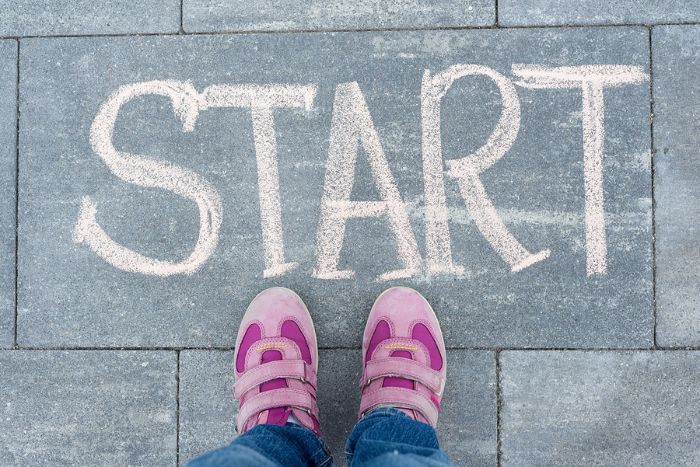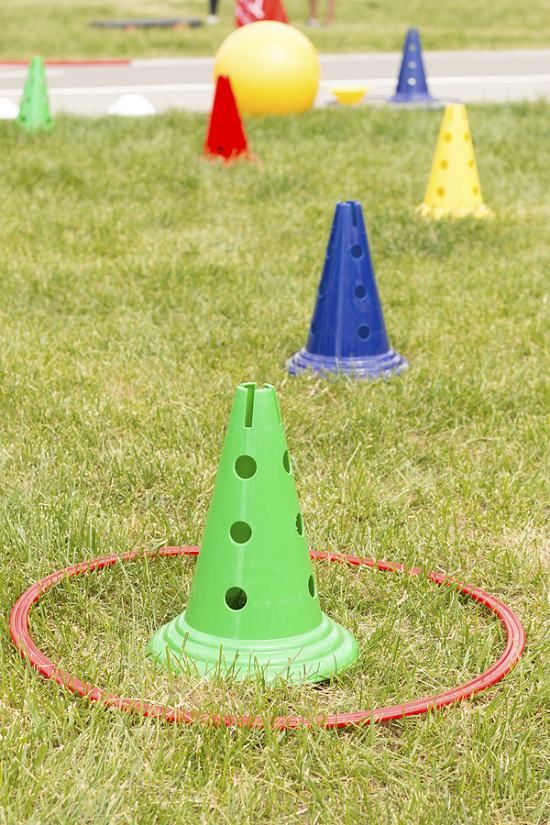An obstacle course is a wonderful way to engage a young child in movement. These awesome ideas are simple and will provide hours of entertainment and learning.
Although there are many kinds of obstacle courses and ways to build them, they share several similarities. They use objects and structures as the obstacles to “conquer,” as well as a specific path the children must follow, in a set order.
Here are 20 obstacle course ideas for kids at home or school. There are both indoor and outdoor course ideas.
How to Make an Obstacle Course
Why buy an expensive kit when you already have all the required parts for a homemade obstacle course?
For an indoor design, consider using various household objects, furniture, pillows, toys, indoor riding vehicles, bean bags, soft balls, empty boxes, and additional things you otherwise place in the trash or recycling.
Outside preschool obstacle courses can incorporate playground equipment, materials from nature, hula hoops, jump ropes, balls, bikes, and wide-open spaces.
20 Easy Obstacle Course Ideas
Try these preschool obstacle course ideas at home or school. There are indoor and outdoor ideas.
1. Cones to Mark the Course
Make cones with empty plastic bottles or leftover containers filled with sand or water.
2. Tunnel or “Waterfall” for Crawling
Line up kitchen/dining chairs and throw a blanket or sheet over the top for a tunnel; attach blue and white crepe paper streamers to chairs for a waterfall effect.

3. “Tightrope” for walking
Use string or wool on the carpet for a tightrope to practise balance.
4. Newspaper “Golf Clubs” for Rolling and Hitting
Roll newspapers and tape them tightly to use as golf clubs; hit and roll soft balls into a basket placed on its side or roll between cones.
5. Laundry Basket for Throwing
Throw soft balls or bean bags into the basket.

6. Rings for Tossing
Cut out the middle of paper plates and toss them over weighted bottles or candlestick holders.
7. “Hot Lava” for Jumping, Tumbling, and Somersaulting
The floor is lava and your kids must navigate across the room in different ways on cushions and pillows.
8. Glow-in-the-Dark Course
Use glow sticks and rings, along with porch lights and flashlights, for added fun to any outdoor course.
9. Water Table or Kiddie Pool for Scooping
Challenge kids to scoop a set number of plastic ducks or other objects from the water as a part of the course.
10. Sand Table or Sand Box for Digging
Dig for a specified number of “dinosaur eggs” or other fun objects in the sandpit as you go through the course.
11. Sidewalk Chalk or Tape Course
On a large, safe cement area, draw the entire course with chalk for children to follow, using numbers, words, shapes, and arrows. For even less mess, use coloured tape on the surface for lines, shapes, and arrows.

12. Trike or Bike Course
Make low wooden ramps, cardboard box tunnels, and “roads” marked with “street signs” to navigate with vehicles.
13. Wet Summer Course
On a warm day, children can navigate through sprinklers, kiddie pools and water balloons.
14. Garden Obstacle Course
Make use of plastic planting containers, buckets, children’s plastic gardening tools and wheelbarrows as objects in your course.
15. Theme Course
Pick a theme (circus, parade, vehicles, bubbles, birthday, or amusement park) and challenge children to help design a course.
16. Arrange a Course
Lay out a set of items and ask your children to use them all in a course.
17. Design Your Own Course
After experiencing several set courses, allow kids to design their own, from start to finish.
18. Reverse Obstacle Course
Once a certain obstacle course has been completed, experiment with trying that same course in reverse order.
19. Race the Course
For an added challenge and some competition, time the obstacle course action.
20. Sensory Fun
Add more sensory input, like music or sounds for signals, a snack station for taste-guessing, or a “feelie” bag to reach in and guess the objects.
The possibilities are practically endless, depending on what your children like and the materials you have on hand.
Obstacle courses can vary with the seasons or weather, as well. Jump over puddles, climb up sand hills, crawl through snow tunnels, and jump into piles of leaves!
What are the Benefits of Obstacle Courses?
Beyond having fun and using energy, obstacle courses for preschoolers offer many skill-building advantages. Some of these benefits can seem obvious, while others may be more surprising.
Gross Motor
Any activity in which children use the large muscles in their legs, arms, and torso helps to build their gross motor skills.
In an obstacle course, this can include skills such as jumping, running, crawling, walking, pushing, pulling, lifting and throwing.

Coordination
Gaining control over their movements is an important skill that may be practised by kids through an obstacle course.
Those types of skills can include walking a “tightrope” on the ground, skipping from one spot to the next, and climbing a playground ladder.
Strength
To effectively carry out the gross motor activities mentioned above, both strength and endurance are required and practised by children.
For example, the ability to lift a specified object to throw toward a goal requires a certain amount of strength that may be increased over time.
Planning
Some obstacle courses offer various options, which allow kids to plan ahead about their decision-making.
The path could offer a choice to turn left or right, for example, with one direction requiring more crawling and the other calling for more running. They must plan what to do when the time comes.
Creativity
A wonderful way to encourage creativity is to ask children to take part in designing the obstacle course. This can involve drawing, writing, communicating ideas verbally and using imagination.
Following Instructions
Whether you or your children design the course, you will need to give directions on how to proceed through it. These must be discussed and demonstrated.
Ask your children to restate the directions to check for understanding. Part of the challenge is to follow those instructions as they advance through the course. This requires good listening skills.
Early Maths
During an obstacle course, kids will explore concepts related to early maths, like understanding and practising positional words as they go through the courses: under, over, behind, in front of, through, down and up.
They could also be asked to count a special number of objects to pick up or to complete a certain number of jumping jacks, for example. In addition, the different phases of the courses may be numbered in 1, 2 and 3 order.
Early Reading
Environmental print can easily be incorporated into obstacle courses. For example, place a sign on a tunnel with the word “crawl” and an image of a child crawling or just the word “tunnel” to label it.
Signs giving directions can be included, such as, “Turn right,” with an arrow that points. If children take part in designing the course, they can dictate the instructions and see their words in written format, possibly adding illustrations that match.
For more gross motor fun, here are the 35 BEST gross motor activities for kids.


Meg
Sunday 16th of April 2023
Amazing resource - as always! Thank you! Your article are concis, informative and practical!
Tanja Mcilroy
Monday 24th of April 2023
Thanks Meg!